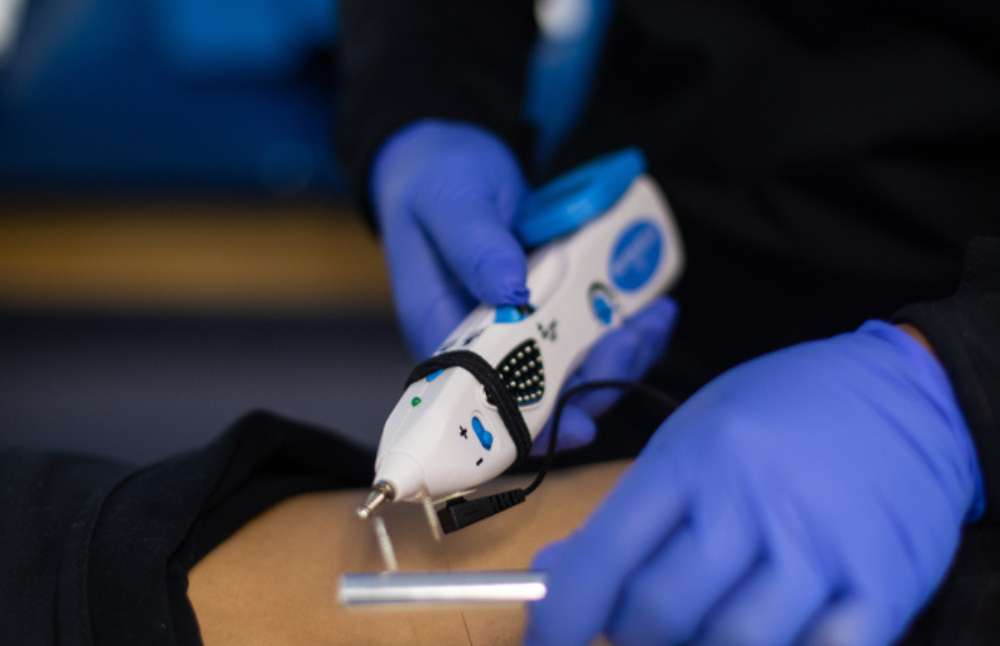Advanced Spinal Cord Stimulation Services in New York City
Find Pain Relief with NY Spine Medicine’s Expert Care

CTA Connect With Us.
Why You Can Depend On Us
Proven Track Record
We have successfully helped countless patients find relief from chronic pain conditions.
Comprehensive Care
From diagnosis to follow-up, we provide a holistic approach to pain management.
Positive Patient Testimonials
Hear from our satisfied patients who have experienced life-changing results with our treatments.
Spinal Cord Stimulation: An Overview
Spinal cord stimulation (SCS) is a minimally invasive procedure that involves the implantation of a small device to deliver electrical impulses to the spinal cord, effectively blocking pain signals from reaching the brain. This innovative therapy can provide significant relief for individuals suffering from chronic pain conditions, offering an alternative when other treatments have failed. At NY Spine Medicine, our experts specialize in leveraging the latest advancements in SCS technology to deliver safe and effective pain management solutions tailored to each patient’s needs.
Tailored Solutions for Lasting Relief
At NY Spine Medicine, we take a comprehensive approach to spinal cord stimulation. The process begins with a thorough evaluation of your medical history and pain symptoms. We take the time to understand your unique needs and concerns, allowing us to develop a personalized treatment plan that addresses the root cause of your pain. From medication management and physical therapy to advanced interventional procedures like SCS, we offer a range of options to help you achieve long-term relief and improve your quality of life. Trust NY Spine Medicine for expert care and compassionate support throughout your treatment journey.
The Advantages of Spinal Cord Stimulation
Experience a life with reduced pain and improved quality of life through spinal cord stimulation. This innovative therapy offers a range of benefits for individuals suffering from chronic pain conditions. Here are some of the advantages:
- Effective pain relief, allowing for better mobility and function
- Reduction in the need for pain medications and their associated side effects
- Improved sleep and overall mood
- Ability to participate in daily activities and enjoy hobbies without constant discomfort
- Customizable settings to match individual pain patterns and preferences


State-of-the-Art Facilities and Technologies
NY Spine Medicine is equipped with state-of-the-art facilities and cutting-edge technology to ensure optimal outcomes for our patients. Our advanced diagnostic tools enable us to accurately assess your condition, while our modern treatment techniques allow for precise and effective spinal cord stimulation procedures. Rest assured, you are in capable hands at NY Spine Medicine.
Compassionate Care and Ongoing Support
At NY Spine Medicine, we understand that managing chronic pain is not just about the procedure; it’s about the ongoing support and care provided to our patients. Our compassionate team is dedicated to offering personalized attention and guidance throughout your treatment journey. From your initial consultation to post-procedure follow-up appointments, we are here to address your concerns, monitor your progress, and ensure that you receive the comprehensive care you deserve. Experience peace of mind knowing that you have a trusted partner in pain management with NY Spine Medicine
Ready to Experience Real Pain Relief?
Don’t let chronic pain hold you back from living life to the fullest. Contact NY Spine Medicine today to schedule your consultation and explore how spinal cord stimulation can transform your quality of life. Our team of experts is here to listen to your concerns, answer your questions, and provide the compassionate care and support you need to find relief. Take the first step towards a pain-free future by reaching out to us now.
What People Say
About us.
Don’t let pain rule your life. See why our patients love us! We’re proud of our excellent Google review ratings. Our compassionate care and dedication to finding real solutions have earned us a near-perfect average across hundreds of reviews.

